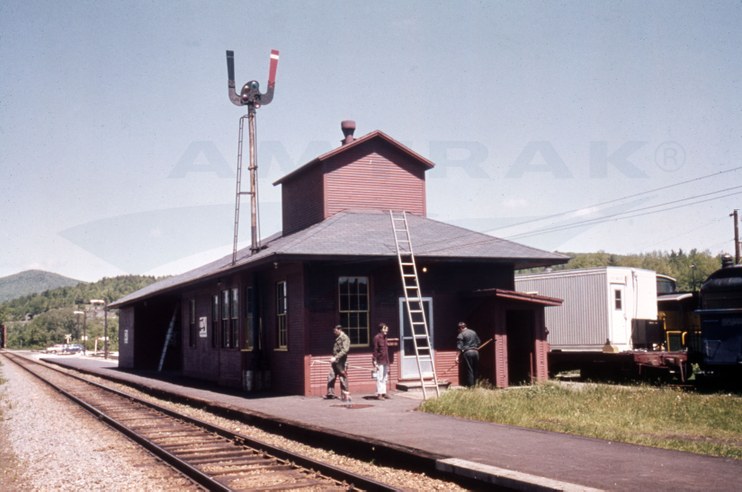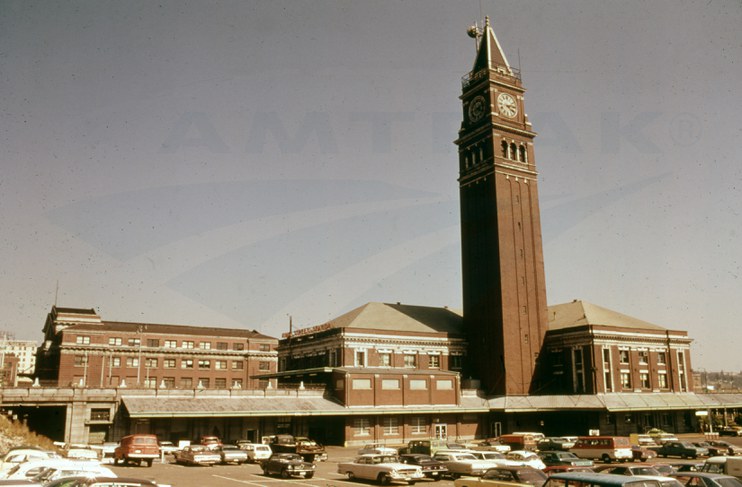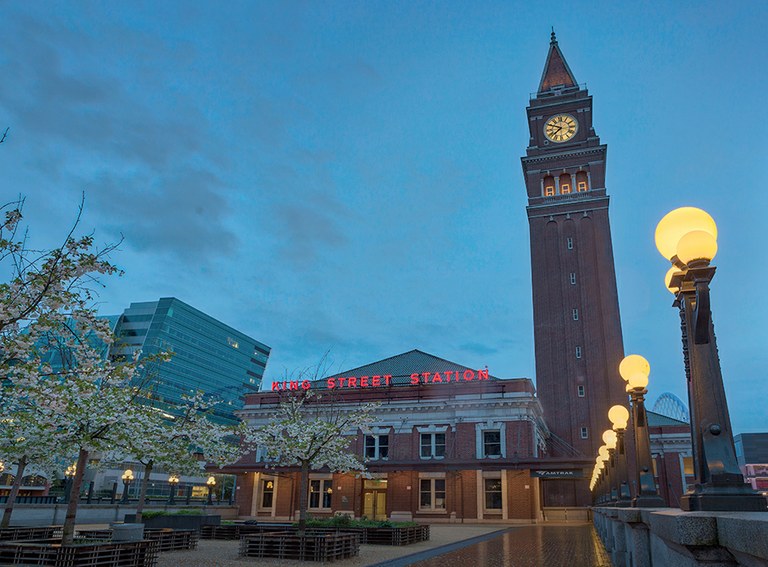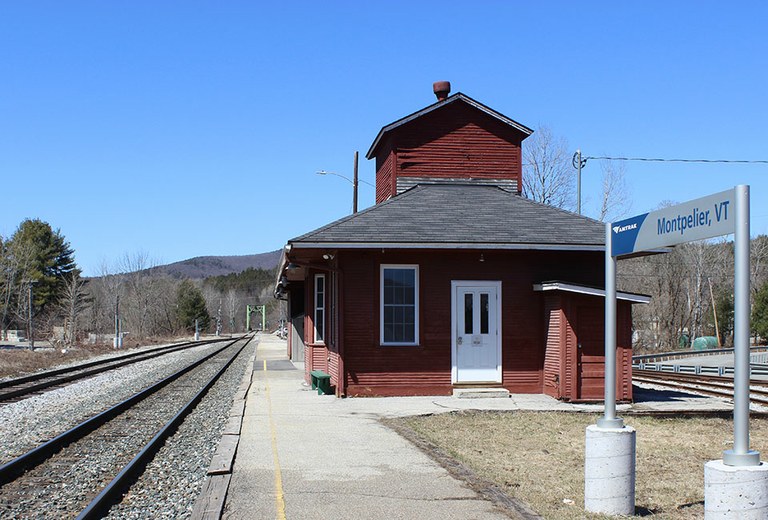Stations Then and Now: Tour 4
CommentsJanuary 25, 2019
The Amtrak Marketing department photo library contains thousands of slides that we are working to sort, digitize and make available to the public. The collection includes images of trains traveling through diverse landscapes, Amtrak employees performing their job duties and station interiors and exteriors.
With the passage of time, they have become valuable visual records of stations and communities that hold interest for railroad and local historians. Change is evident when compared to contemporary scenes, but some elements remain the same. Some depots no longer stand, while others have been restored and are now listed as historic landmarks.
Below we take a look at a handful of stations then and now, and you can also get to know the stations from Tour 1, Tour 2 and Tour 3.
SEATTLE, WASHINGTON
Served by the Amtrak Cascades, Coast Starlight and Empire Builder
Completed in 1906
Seattle King Street Station was constructed in 1906 by the Great Northern Railway. Designed by the firm of Reed and Stem of St. Paul, Minn., which was involved with the building of Grand Central Terminal in New York City, the station is composed of granite and red brick with terracotta and cast stone ornamentation. The distinctive clock tower is a Seattle landmark and was inspired by the bell tower on the Piazza San Marco in Venice, Italy.
By the time this slide was produced in the 1970s, the station’s interior had been modernized according to period tastes. The waiting room's ornate plaster ceiling was covered for the next three decades by a fabricated, lowered false ceiling. Handsome brass chandeliers were replaced by fluorescent lighting, and marble and mosaics on the walls were covered with plastic laminate.
Phased cosmetic renovations, a seismic retrofit and modernization of services began in 2003 and culminated a decade later. New platform and entrance canopies and brass fixtures were installed. Tall windows in the waiting room that were covered over were replaced by new wood frame windows, and now natural light floods the space. Decorative plasterwork in the waiting room was restored and painted.
Numerous “green” features were incorporated into King Street Station to lower energy consumption. One of the biggest projects was the drilling of 68 geothermal wells to power heating and cooling systems. Photovoltaic panels were installed on parts of the canopy that circles the building at the King Street level.
Today, the rehabilitated intermodal facility continues as a crossroads for important downtown neighborhoods, including the Commercial, International, and Stadium districts, as well as world-renowned Pioneer Square.
MONTPELIER-BERLIN, VERMONT
Served by the Vermonter
Completed in 1934

1980s: Note the trackside semaphore signal, which has since been removed.
Although these two images were taken at least 30 years apart, the older one in the 1980s, they appear quite similar. The Montpelier-Berlin stop primarily serves the state capital located about two miles to the east, but the depot is located just west of the Dog River in the town of Berlin.
There has been a passenger rail station at this location—known to locals as Montpelier Junction—since the mid-19th century. The junction takes its name from the joining of the old Vermont Central Railroad mainline and a branch line that allowed direct service to downtown Montpelier opposite the state Capitol.
Opened in July 1849, the branch line carried passengers to Montpelier until regular service was discontinued in 1938 and replaced by a bus between downtown and Montpelier Junction. Passenger rail service along the railroad mainline ended at the junction in September 1966 and did not resume until the introduction of the Montrealer/Washingtonian (Washington-New York-Montreal) in 1972.
Documentation shows that the current depot, a red-painted wood-frame building with a gabled roof, is likely the third to occupy the site. It was constructed for the successor Central Vermont Railway and opened in 1934. Passengers use a small waiting room with wooden benches and large windows. The rest of the depot, which is divided from a freight room by a covered passageway, is used by the New England Central Railroad.
Interestingly, the older image shows a trackside semaphore signal, which has since been removed. Other historic photographs show that a canopy once ran along the platform to protect passengers from inclement weather, but it was taken down many years ago. In the early 20th century, the area around the depot also hosted an engine house, a 50,000-gallon water tank and a coaling facility, but none of these structures remain. In the far distance of the 2018 image, you can see the railroad bridge over the Winooski River, which flows through downtown Montpelier.
WEST GLACIER, MONTANA
Served by the Empire Builder
Completed by 1910 (enlarged 1935)
The West Glacier station, originally known as Belton, is located on the edge of Glacier National Park. Built and expanded by the Great Northern Railway (GN) between 1906 and 1935, the depot features rough-hewn siding that gives it a rustic appearance in keeping with other structures throughout the park. This 1980s image shows the Empire Builder (Chicago-Seattle/Portland), which operates with bi-level Superliner cars, making one of its two daily stops at the station.
Today Amtrak passengers use just the platform adjacent to the depot, which houses a retail shop run by the Glacier National Park Conservancy. The non-profit group assures the Glacier National Park experience by providing support for preservation, education and research through philanthropy and outreach. One of the conservancy's predecessor organizations received the depot in 1991 as a donation from the Burlington Northern Railroad. It was renovated with attention to the cultural history and significance of its original use. Comparing the two images, it’s clear that at some point in the intervening three decades, the covered area on the building’s west end was enclosed.
The GN moved through this part of Montana in 1891 as it worked to complete its transcontinental line between St. Paul, Minn., and Seattle. The new community, known as "Belton" after an early settler named Bell, had a depot (two box cars, one of which was the station agent's residence), hotel, saloon, store and post office. As word spread of the region's beauty and abundant wildlife, tourism developed.
In an effort to foster tourism in the Rocky Mountains, which early boosters romantically termed the "American Alps," the GN built a series of nine Swiss chalet-type hotels in the region beginning in 1909. One of the first of these resort hotels was the Belton Chalet, erected south of the depot and connected to it by a trellised pathway. It opened in June 1910, a month after President William Howard Taft designated the area a national park.
Glacier National Park, known for its lakes, forests and soaring mountains, attracted nearly 3.3 million visitors in 2017. More than 240 national parks and sites are accessible from Amtrak-served communities.









